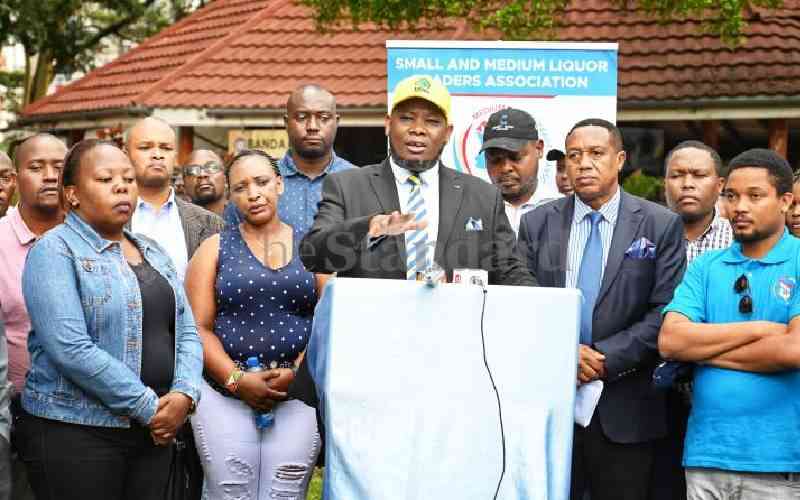A curious incident took place this week when MPs drawn from Mt Kenya met in Naivasha, and after lengthy discussions, issued an intriguing statement.
Two issues stood out. On one hand, they complained they had been “ignored” by the Jubilee government in distribution of development dividends.
Secondly, the region felt the current formula for distributing national revenue, whether through the National Government Constituency Development Fund or the Commission on Revenue Allocation (CRA)’s formula on county allocations were weighted against the region which was slowly becoming marginalised.
Naturally there was derisive laughter on the marginalisation claim. Many wondered where West Pokot, Wajir, Taita Taveta and such other counties would be placed if Mt Kenya was defined as marginalised.
The legitimacy or otherwise of the complaints aside, the grouse by the Mt Kenya leaders affirmed a reality that Kenyans are slowly coming to terms with; the dynamics of resource distribution were grossly altered by the Constitution.
Despite this changed environment, many in leadership are still playing by the old template. Pre-2010, the Presidency meant automatic and unlimited access to state largesse by regions and individuals. These were the days of “siasa mbaya maisha mbaya”.
You voted for the wrong team and you paid a developmental price. The clamor for the new constitution was to change this paradigm. It was intended to weaken the direct link between the Presidency and development. To make resource distribution largely rule based. It was meant to diversify the actors in resource allocation.
What the complaint by Mt Kenya’s leaders indicates is that we have come some way in meeting the Constitution’s intent. While invariably there are benefits to individuals who are aligned to those in power, these benefits no longer transmit to regions in the way they did before. The process of resource distribution has been democratised and is rule based. The executive now shares the resource allocation process with Parliament. But even where the Executive has discretion, the 50 per cent plus one requirement in presidential polls means that no President wants to pay the political price of unduly and openly benefiting his region at the expense of others.
All these factors combined means that as the Constitution intended, the Presidency matters less and less in resource distribution for regions. It is also clear that the Mt Kenya leadership has recognised the critical role of the revenue division rules and the need to be strategic in ensuring the rules do not marginalise their regions. I remember the first discussion on the CRA formula and the total disinterest by many in the region on that discourse.
You cannot for example compare their approach with that of the former Northern Frontier Districts (NFD) communities, which were discovering natural resources. In Parliament, the latter caucused strategically and ensured heavy representation in all meetings called to discuss the natural resource sharing formula. This approach paid dividends, including the generous provisions in the Petroleum law.
It would appear that there was an assumption in the mountain that the Presidency was the greatest prize; these rules did not really matter. They matter and they can marginalise regions. Two aspects of the CRA formula stand out.
When the equal share per county is high, it obviously hurts more populated counties. When land size as a consideration in the formula is high and the consideration of population is low, this combination obviously hurts counties that are densely populated.
If one then considers that despite some parts of the mountain region being very poor, they are excluded from the Equalisation Fund, these leaders have a right and duty as representatives of their voters to complain. The only challenge is that in a changed resource distribution framework, the Presidency will not be able to deliver most of what the region is demanding.
The leaders have to go back to Parliament, lobby for fairer allocation to their areas, and strategically agitate for continual revision of the rules where the current rules are unfair. That is the new paradigm.
- The writer is an advocate of the High Court of Kenya.
Stay informed. Subscribe to our newsletter
 The Standard Group Plc is a
multi-media organization with investments in media platforms spanning newspaper
print operations, television, radio broadcasting, digital and online services. The
Standard Group is recognized as a leading multi-media house in Kenya with a key
influence in matters of national and international interest.
The Standard Group Plc is a
multi-media organization with investments in media platforms spanning newspaper
print operations, television, radio broadcasting, digital and online services. The
Standard Group is recognized as a leading multi-media house in Kenya with a key
influence in matters of national and international interest.
 The Standard Group Plc is a
multi-media organization with investments in media platforms spanning newspaper
print operations, television, radio broadcasting, digital and online services. The
Standard Group is recognized as a leading multi-media house in Kenya with a key
influence in matters of national and international interest.
The Standard Group Plc is a
multi-media organization with investments in media platforms spanning newspaper
print operations, television, radio broadcasting, digital and online services. The
Standard Group is recognized as a leading multi-media house in Kenya with a key
influence in matters of national and international interest.








